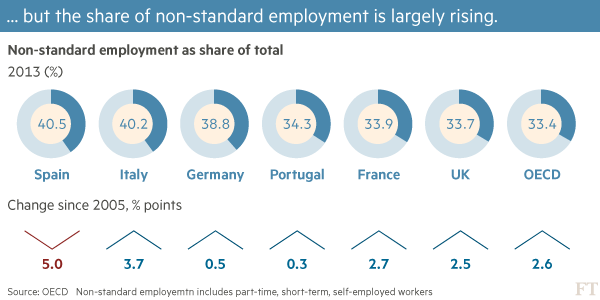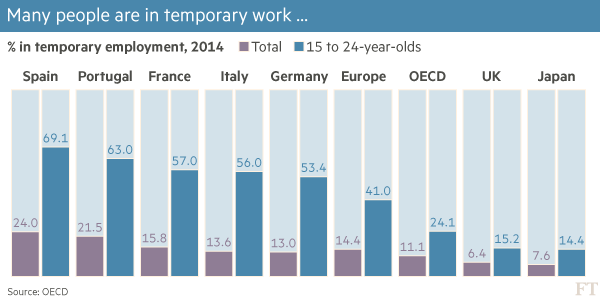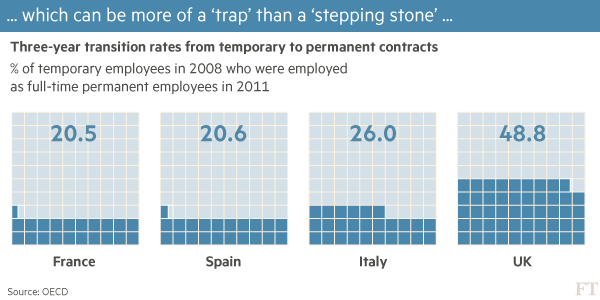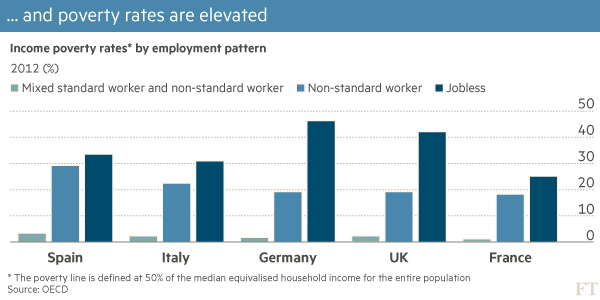August 4, 2015 11:06 am
More than eight years after the international financial crisis, many new jobs have been created.
But unemployment rates still remain well above pre-crisis levels.
As Europe’s post-crisis workers live through huge labour market upheaval, FT reporters look at what this means for young people, businesses and economies.
The jobs market has started to recover and unemployment rates are now declining. However, in the euro area, the unemployment rate is still 3 percentage points higher than it was in 2007. The unemployment rate in the OECD as a whole is falling faster, but has yet to reach pre-crisis levels.
Unemployment rates remain stubbornly high, particularly among peripheral European countries. In Spain and Greece it remains above 20 per cent.
While unemployment rates have declined, the proportion of people in non-standard employment has increased since 2005, according to the OECD. Non-standard jobs includes part-time and short-term workers and self-employed people.
About two in five people in employment have such contracts in Spain, Italy and Germany. Across the OECD, an average of one in three jobs are non-standard.
Temporary jobs account for more than 20 per cent of employment in Spain and an average of 11 per cent of jobs in the OECD. These kinds of jobs tend to be much more widespread among young people. More than half of those in work and aged between 15 to 24 years old in 2014 in Spain, France, Italy and Germany were in temporary employment.
France and Italy have registered some of the biggest increases in the proportion of short-term workers over the past 10 years. In Italy the rise has been particularly concentrated among the youth.
A temporary job might be a first step in the workforce, but could prove to be a trap. According to the OECD less than 50 per cent of workers in European countries in temporary jobs had full time permanent contracts three years later.
Poverty rates are much higher among people with non-standard jobs than among full-time permanent employees across all OECD countries. About 22 per cent of households that rely on non-standard work are below the poverty line.





No comments:
Post a Comment